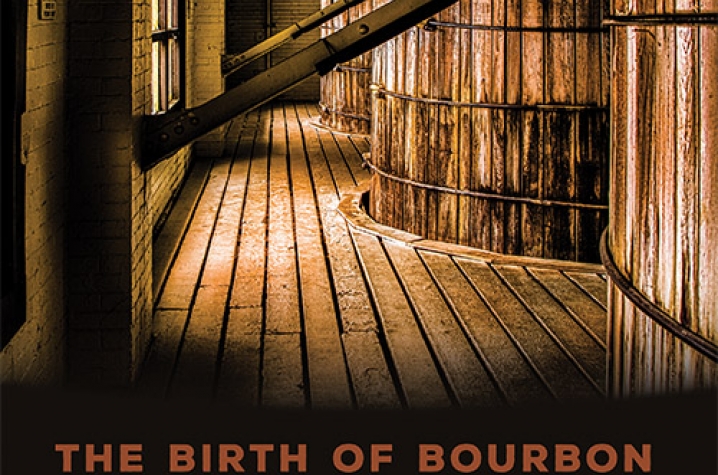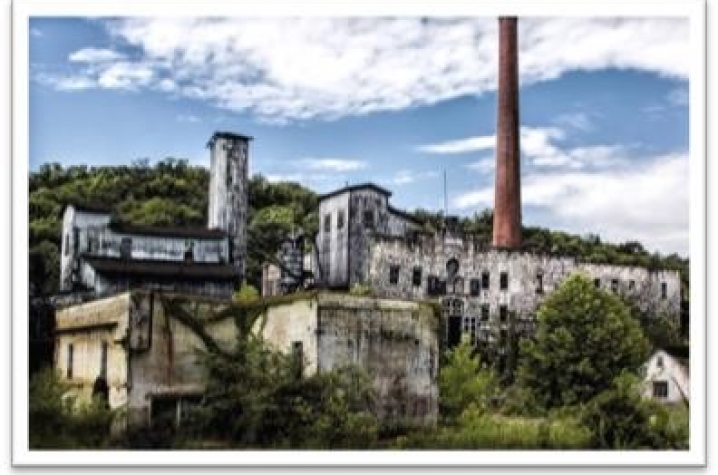New UPK Books Offer Taste of Bourbon History
LEXINGTON, Ky. (Dec. 17, 2015) — Have a bourbon enthusiast in your family or circle of friends who shares their adventures up and down the Bourbon Trail or fun facts like there are more barrels of bourbon in Kentucky than people? Well, University Press of Kentucky (UPK) may have just the book to satisfy their thirst for more information on America's only native spirit. The press recently released two books related to Kentucky’s signature industry, "The Birth of Bourbon: A Photographic Tour of Early Distilleries" and "The Manhattan Cocktail: A Modern Guide to the Whiskey Classic."
More than 200 distilleries once operated in Kentucky, but only 61 survived Prohibition. Though the businesses were gone, most of the buildings remained, unused, slowly deteriorating for decades. Now, thanks in large part to the explosion of interest in craft bourbon, many of these historic buildings are being brought back to life, often as new distilleries. With progress, however, comes loss, and the record of what existed at these sites across the Commonwealth is disappearing just as more and more people are interested in bourbon’s history.
Presentation of a case study on the James E. Pepper Distillery from "The Birth of Bourbon" by Carol Peachee.
Award-winning photographer Carol Peachee has documented many of these sites in "The Birth of Bourbon." She memorializes Kentucky’s oldest distilleries with her camera, capturing their architectural and mechanical wonders. Rather than viewing the industrial sites as merely remnants of the past, Peachee treats each space as an archeological find as she follows the ghosts of proud laborers through Kentucky’s bourbon history. By capturing Kentucky’s abandoned distilleries in intimate images, she documents these incredible historic sites that are rapidly vanishing or being irrevocably changed.
Using a photography technique called high-dynamic-range (HDR) imaging, Peachee captures the vibrant and haunting beauty of the distilleries. HDR photography is a process that layers three or more images taken of the same scene at different shutter speeds. The technique creates a fuller range of luminosity and color and gives the photographs a striking, ethereal quality. Insightful commentary accompanies each photograph, and Peachee’s reflections provide valuable information about the distilleries and the people who spent their lives working inside them. From massive machinery, colored a luminous yellow as it corrodes, to personal artifacts such as an abandoned oil can, these images reveal the vanishing years of bourbon history.
In 2010, the James E. Pepper Distillery in Lexington was the first set of ruins that she photographed. Four years later, the location was repurposed and commercialized. Just months after Peachee visited the Old Crow Distillery in Millville, the ruins were sold to entrepreneurs who plan to build a craft distillery in the bottling house. Likewise, the Dowling Distilleries warehouse in Burgin was photographed in the process of being torn down. Major buildings at other sites like Buffalo Springs Distillery in Stamping Ground did not survive to be photographed.
As more and more historical distilleries are lost or altered, these images provide an important glimpse of the past and detailed insight into Kentucky’s relationship with bourbon. "The Birth of Bourbon" is a tour of Kentucky bourbon heritage that might have otherwise been lost if not for Peachee’s determination to save it. The results not only document what remains, but they also showcase the beauty of these sites through a meditation on impermanence, labor, time, presence and loss.
For those readers looking for a way to savor their love for bourbon, "The Manhattan Cocktail" is a more classic fit.
In the art of mixology, innovation is constant, but the favorites remain timeless. The Manhattan is one such classic with a curious history and distinctive attributes that set it apart from the rest. Although the ingredients are simple in theory — whiskey, vermouth and bitters — the fine details, proportions and liquor used, create endless possibilities. The preferred drink of Gilded Age luminaries such as investor J. P. Morgan and New York Governor Samuel J. Tilden, it remains relevant, and has even has seen a surge in popularity thanks to the craft bourbon boom and modern bartenders adding a 21st-century spin to this 19th-century cocktail.
Bourbon connoisseurs and amateur mixologists alike will find everything they need to know about this venerable beverage in "The Manhattan Cocktail" by Chef Albert W. A. Schmid, director of the Hotel-Restaurant Management and Hospitality Management Departments at Sullivan University’s National Center for Hospitality Studies. He walks readers through the lore surrounding the Manhattan, refuting one popular claim of Lady Randolph Churchill requesting the creation of the drink in honor of Samuel J. Tilden’s election to the governor’s office. Schmid also provides a helpful chart, useful tips and even answers the question of "shaken or stirred?" Rounding out this collection are more than 50 recipes, from the classic to the modern, that are sure to provide even the most seasoned bartender with new ideas.
Schmid details the Manhattan’s long history in American culture — from the infamous Whiskey Ring to its connections to the intriguing and influential Spencer-Churchill family. Dubbed the father of the Martinez and the grandfather of the martini, the Manhattan was created not long after the end of the Civil War, and its history reflects the tumultuous era in which it was born. The beverage is as timeless as the people associated with it, and Schmid includes recipes from a number of them, from British novelist Sir Kingsley Amis’s (whiskey) Manhattan to Kentucky humorist Irvin Cobb’s Manhattan (dry).
Through anecdotal storytelling and an eye for the art of mixing drinks, "The Manhattan Cocktail" reveals the rich origins of this truly American concoction and provides the knowledge necessary to pour the perfect glass.
UPK is the scholarly publisher for the Commonwealth of Kentucky, representing a consortium that now includes all of the state universities, five private colleges and two historical societies. The editorial program of the press focuses on the humanities and the social sciences. Offices for the administrative, editorial, production and marketing departments of the press are found at the University of Kentucky, which provides financial support toward the operating expenses of the publishing operation.
MEDIA CONTACT: Whitney Hale, 859-257-8716; whitney.hale@uky.edu









